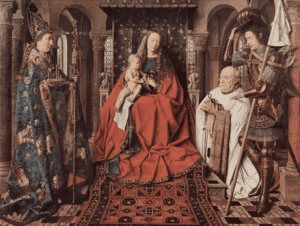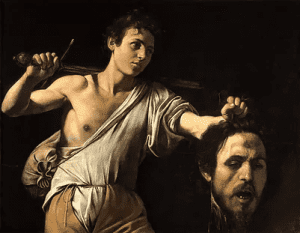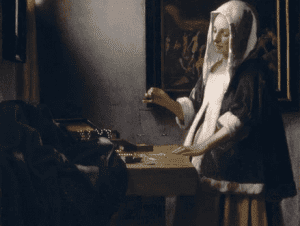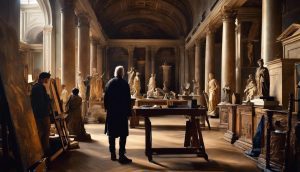Title of Artwork: “Adoration of the Name of The Lord”

Artwork by Francisco Goya
Year Created 1772
Summary of Adoration of the Name of The Lord
This fresco was painted on the ceiling of the Basilica in the small town of Zaragoza, Spain, and is one of Goya’s earlier works. When he returned from his art student trip to Italy, he was given the commission to paint the ceiling. He received 10,000 reales less than the other, more well-known artists who contributed to paintings in the Basilica at the time, but this was to his advantage because it provided him with an audience for his work, which was soon to be the Spanish royal family and nobility.
All About The Adoration of the Name of The Lord by Francisco Goya
The Adoration of the Name of God (Spanish: Adoración del nombre de Dios) or The Glory (Spanish: La gloria) (1772) is a fresco painted on the ceiling of the cupola over the Small Choir of the Virgin in Zaragoza by Francisco Goya.
In 1771, Goya received the commission to decorate the vault over the small choir of the Basilica del Pilar in Zaragoza, with a painting on the adoration of the name of God, in the execution of which he amply demonstrated his mastery of fresco painting techniques, though his remuneration was less than that of the other artists working on the ceilings of the basilica: Goya received 15,000 reales in total.
In its final form, the work exemplifies the stereotypes of Late Baroque Catholic religious painting. To either side, groups of angels direct attention to the central scene, which is dominated by the Christian Trinity and Godhead symbol: an equilateral triangle inscribed with the Tetragrammaton in Hebrew. The final impression is rather static, dominated by a composition in the shape of a “X,” the result of Goya’s intention to have the lines of force coming in from the corners and crossing in the centre.
Several sketches and preparatory drawings for the work have been preserved, displaying more accomplishment than the actual painting on the cupola, though it should be noted that the fresco has been restored four times, in 1887, 1947, 1967, and 1991. Goya intended for them to have a high contrast in colour and illumination, as well as a much greater dynamism in movement than is visible in the finished product.
Recommend0 recommendationsPublished in Artworks







Responses